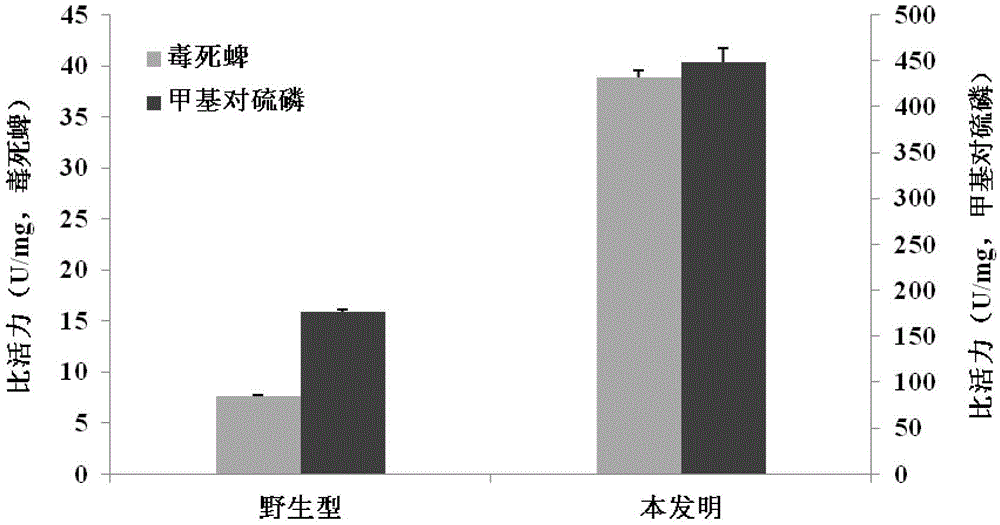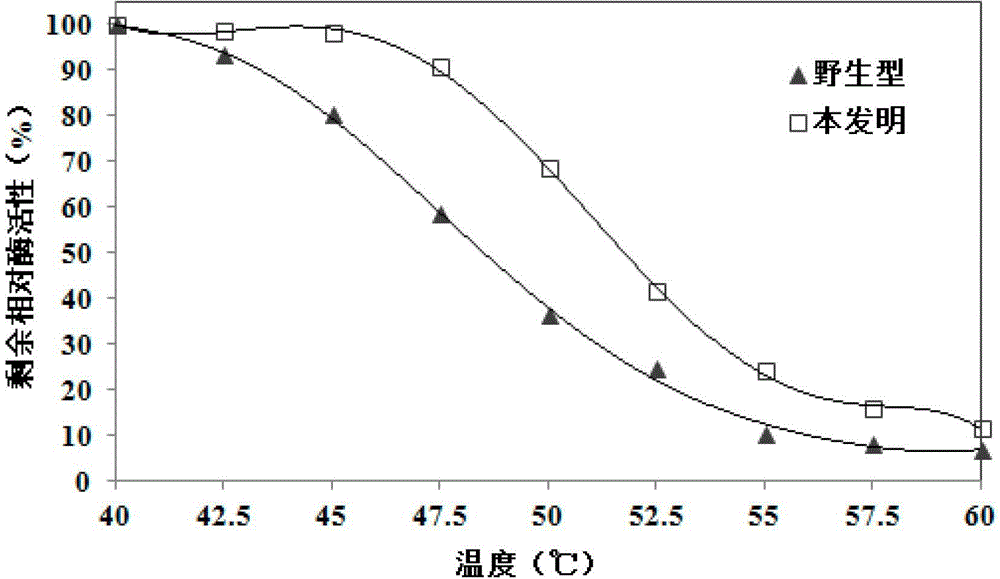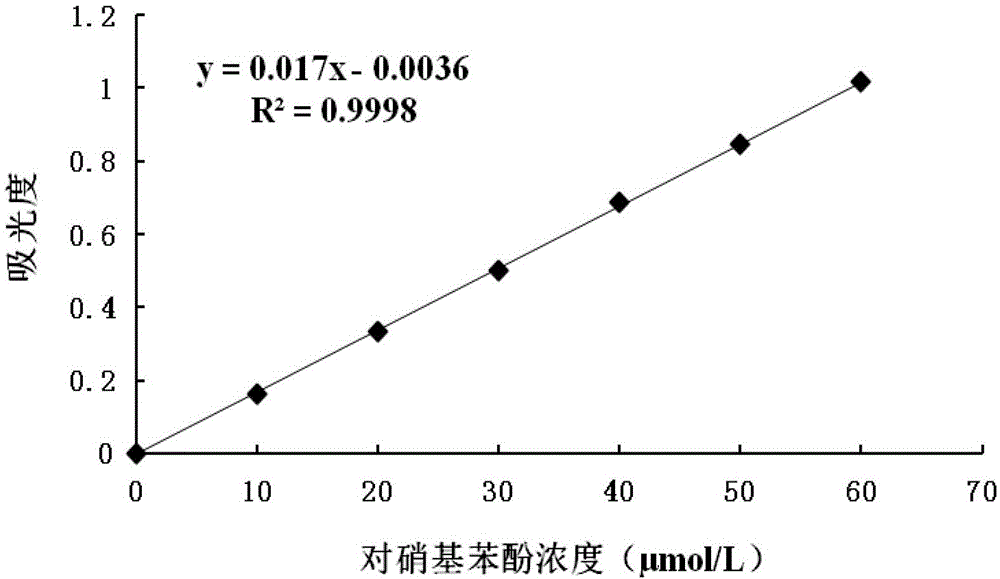Random mutation reconstructed organophosphorus pesticide degradation enzyme and coding genes thereof
An organophosphorus pesticide and random mutation technology, applied in the field of genetic engineering, can solve problems such as failure to obtain results, and achieve the effects of great application value, improved enzyme activity and thermal stability, and less inactivation
- Summary
- Abstract
- Description
- Claims
- Application Information
AI Technical Summary
Problems solved by technology
Method used
Image
Examples
Embodiment 1
[0026] Embodiment 1: the expression of organophosphorus pesticide degrading enzyme of the present invention in Escherichia coli
[0027] (1) PCR amplification: use the upstream primer 5'-ATTCATATGGCCGCACCGCAGG TG-3' and the downstream primer 5'-TAACTCGAGCTTGGGGTTGACGACCG-3' to PCR amplify the organophosphorus pesticide degrading enzyme gene of the present invention.
[0028] The reaction conditions for PCR (50 μL system) are: 50ng of the organophosphorus pesticide degrading enzyme gene (SEQ ID No.1) of the present invention as a template, 0.3 μM each of the upstream primer and downstream primer, 200 μM each of dNTPs, 5U Taq DNA polymerase, 5 μL PCR buffer solution, 30 cycles, denaturation at 94°C for 5 min, denaturation at 94°C for 1 min, annealing at 55°C for 1 min, extension at 72°C for 1 min, and the last cycle of extension at 72°C for 10 min.
[0029] The composition of PCR buffer is: 100mM Tris-HCl pH8.3, 500mM KCl and 15mMMgCl 2 , the solvent is deionized water.
[003...
Embodiment 2
[0041] Embodiment 2: the mensuration of organophosphorus pesticide degradation specific activity of the present invention
[0042] Using methyl parathion and chlorpyrifos as substrates respectively, the specific activity of the organophosphorus pesticide degrading enzyme of the present invention and the wild-type enzyme is determined.
[0043] The production method of the wild-type enzyme is as follows: the organophosphorus pesticide degrading enzyme gene mpd (GenBank accession number: JQ686087) is used as a PCR template, and other operating steps are completely carried out according to the method in Example 1.
[0044] With methyl parathion as substrate, the assay method of specific activity is as follows:
[0045] (1) Preparation of p-nitrophenol standard solution: using 20 μM Tris-HCl (pH 8.0) buffer as solvent, prepare p-nitrophenol concentrations of 10 μM, 20 μM, 30 μM, 40 μM, 50 μM, and 60 μM respectively. Phenol standard solution.
[0046] (2) Drawing of p-nitrophenol...
Embodiment 3
[0075] Embodiment 3: Determination of thermal stability of organophosphorus pesticide degrading enzyme of the present invention
[0076] The purified organophosphorus pesticide-degrading enzyme and the wild-type enzyme obtained in Example 1 at a concentration of 100 μg / ml were respectively incubated at 40°C, 42.5°C, 45°C, 47.5°C, 50°C, 52.5°C, and 55°C , 57.5°C, 60°C heat treatment for 10min, immediately place it on ice for 30min, use chlorpyrifos as substrate, measure enzyme activity and analyze thermal stability.
[0077] The production method of the wild-type enzyme is as follows: the organophosphorus pesticide degrading enzyme gene mpd (GenBank accession number: JQ686087) is used as a PCR template, and other operating steps are completely carried out according to the method in Example 1.
[0078] The assay method of enzyme activity is as follows:
[0079] (1) Preparation of chlorpyrifos standard solution: using 20 μM Tris-HCl (pH 8.0) buffer solution containing 0.1% (volume...
PUM
 Login to View More
Login to View More Abstract
Description
Claims
Application Information
 Login to View More
Login to View More - R&D
- Intellectual Property
- Life Sciences
- Materials
- Tech Scout
- Unparalleled Data Quality
- Higher Quality Content
- 60% Fewer Hallucinations
Browse by: Latest US Patents, China's latest patents, Technical Efficacy Thesaurus, Application Domain, Technology Topic, Popular Technical Reports.
© 2025 PatSnap. All rights reserved.Legal|Privacy policy|Modern Slavery Act Transparency Statement|Sitemap|About US| Contact US: help@patsnap.com



